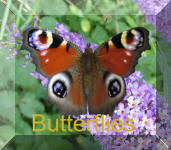IMAGES (C) COLIN DUKE 2006 ALL RIGHTS RESERVED
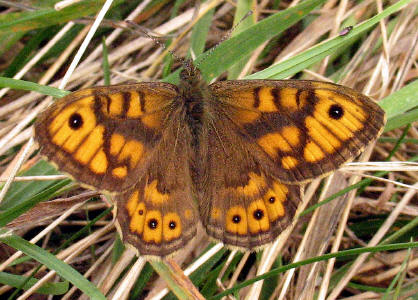
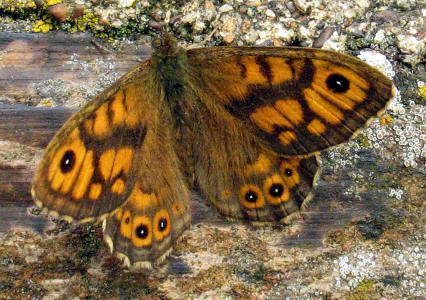
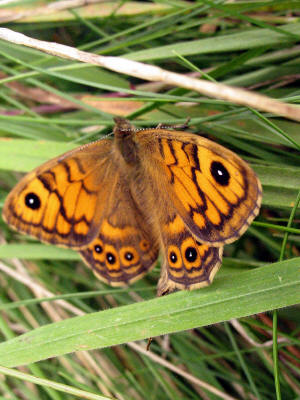
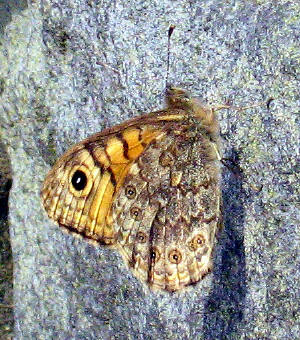
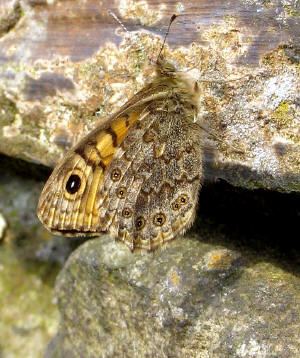
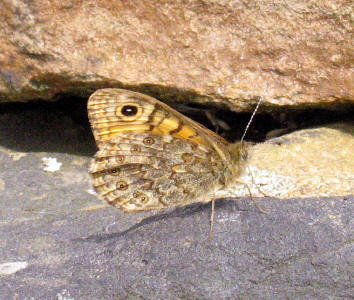
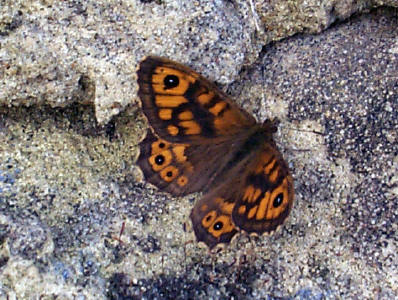
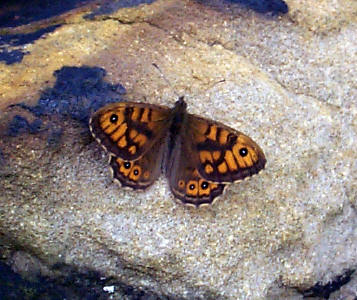
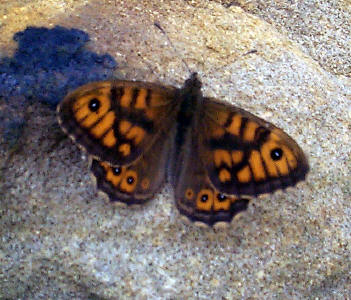
Similar in appearance to the fritillaries, the bright eyespots are usually obvious enough to secure identification. Males have a line of scent scales (known as the ‘sex-brand’ and a feature sported by some other species) and this appears as an oblique dark line across the upper surface of the forewing. Females lack this feature and are both larger and brighter in colour than their mates. Both sexes display some beautifully subtle markings on their underwings, which provide very effective camouflage when at rest. Basking individuals often angle their open wings towards the sun.The eyespots on the Wall Brown serve as a protection for the butterfly if it is attacked by birds. The damage caused when the wing is pecked will rarely prevent the butterfly from escaping.
The caterpillar feeds at night on grasses such as meadow-grass, Tor, Yorkshire Fog and Cocksfoot.
Habitat:
Sunbaked ground in rough open grassland sites is a favourite of this butterfly which may also be seen regularly flying over lanes and hedges. Living in small coloniesIdentification
Medium sized: wingspan, c. 45 mm.
Both sexes are an orange brown on the upper surfaces of the forewings becoming a paler golden brown towards the tip. There are a series of three dark brown irregular bands across the inner half of the forewings and another just inside the outside border of the wing. There is a prominent black eye with a white pupil towards the apex of the forewings. Males have a broad black scent mark extending obliquely across the fore wings. The upper side of the hind wings are a dusky brown on their inner halves and golden brown on their outer halves. There are four black eyespots with white pupils towards the outer edge of the wings bordered on either side by a pair of irregular, dusky-brown bars. The undersides of the fore wings are similarly colour-patterned to the upper surface although the bands are more discrete and the eye is surrounded by a darkly margined pale brown halo. The undersides of the hind wings are a pale grey-brown colour with a pair of dark brown zigzag bands on their inner halves. There is a row of six eyespots towards the outside border. Each eyespot is made up of a black eye with a white pupil within a pale brown halo which itself is contained within a darker brown ring.
Behaviour and life history
The species is normally centred on discrete colonies but, within Plymouth, there would appear to be no permanent colonies that survive from year to year. Most of the Wall butterflies seen in the city are seldom in one place for long although if the weather is hot and sunny they will spend considerable time sunning themselves on bare earth or stones. The species preferred habitat is sunny open rough grasslands containing its larval foodplants ithat include grasses such as Cocksfoot, Dactylis glomerata, and Yorkshire Fog, Holcus lanatus.
Where to look for it
The Wall may occur anywhere in Plymouth, especially the cliffs and grasslands abutting the Sound. Only single specimens are usually found at any one time.
Distribution and status
Rather uncommon and usually only seen in the city as single individuals.
When to look for it
Typically there are two broods with the adults being most often seen firstly in May and then later on in the year during July and August. A third brood may occur in September or October.
Similar species
The Wall is a fairly distinctive butterfly that could only really be confused with the Speckled Wood, Pararge aegeria, and from which it can be separated by its golden-brown colouration.

